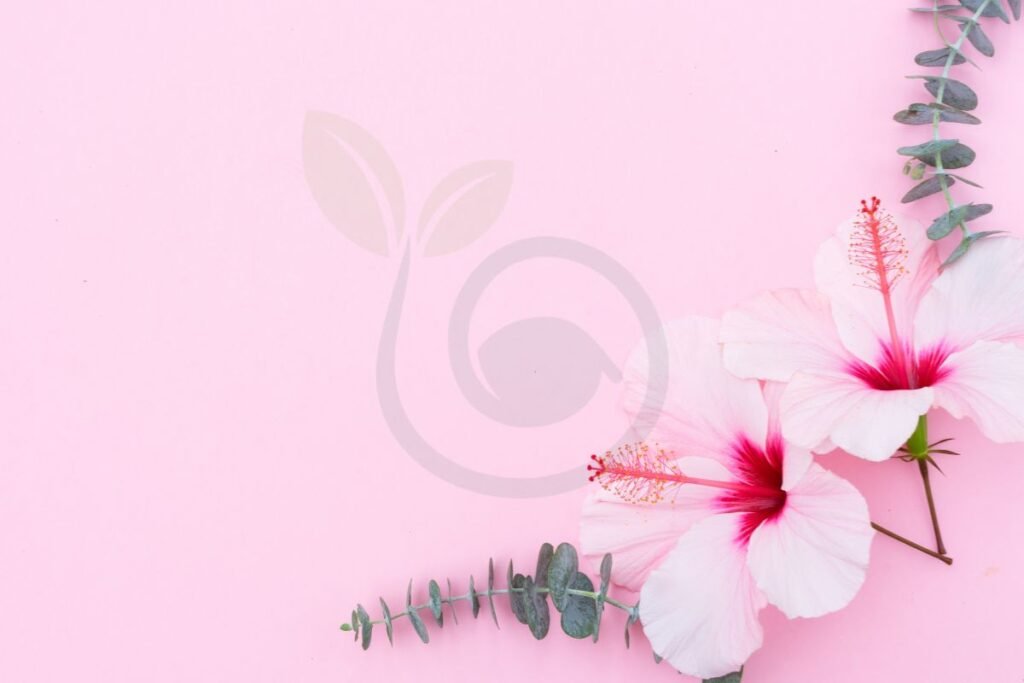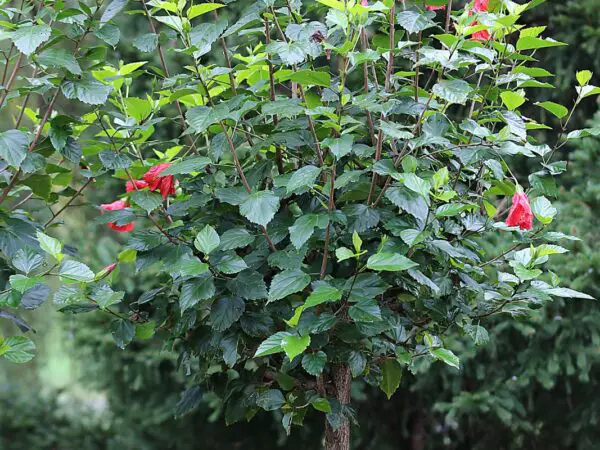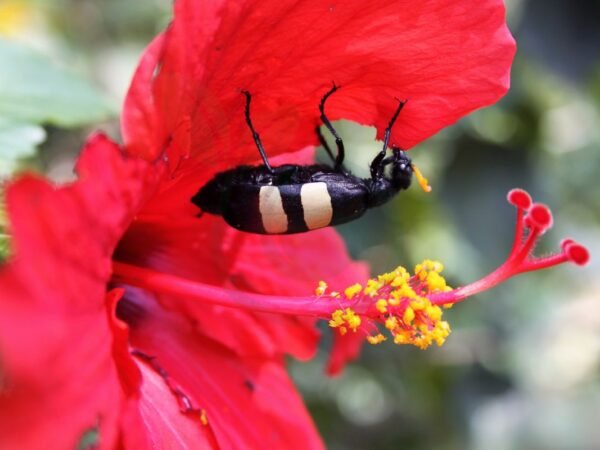
If you've been wondering how to get a hibiscus to flower abundantly, look no further. We have the tips and tricks you need to turn your hibiscus plant into a blooming beauty in no time.
Key Takeaways
- Understand the needs of your hibiscus plant to promote flowering.
- Provide essential care factors like proper watering, sunlight, and soil conditions.
- Create an optimal environment by maintaining consistent temperatures and humidity levels.
- Offer nutritional support through balanced fertilization to encourage blooming.
- Use appropriate pruning practices to stimulate new growth and flower production.
- Explore propagation techniques to expand your hibiscus garden.
Understanding Hibiscus
Types Varieties
Hardy hibiscus varieties come in various flower colors such as red, pink, and white. Each type differs in size, with some producing smaller blooms while others boast larger flowers. When selecting a hardy hibiscus for your garden, consider the unique characteristics of each variety. For instance, some may have double-layered petals or different foliage colors.
Growth Habits
Hardy hibiscus plants exhibit distinct growth patterns, reaching varying heights and spreads. Understanding these growth habits is crucial for proper care. Typically, hardy hibiscus can grow up to 4-8 feet tall and spread around 3-6 feet wide. To ensure healthy growth, provide well-draining soil, ample sunlight, and regular watering. These conditions are essential for promoting lush foliage and abundant blooms.
Seasonal Blooming
Hardy hibiscus plants bloom at specific times during the year, usually from late summer to early fall. However, factors like temperature, sunlight exposure, and pruning practices can influence their blooming season. To extend the blooming period of your hardy hibiscus, consider deadheading spent flowers regularly and providing sufficient water during dry spells. By maintaining optimal growing conditions, you can enjoy vibrant blooms throughout the flowering season.
Essential Care Factors
Light Exposure
To encourage hibiscus flowering, adequate sunlight is crucial. Without enough light, blooms may be limited. Different light exposures affect hibiscus differently. Optimize light exposure by placing the plant in a spot that receives at least six hours of sunlight daily.
Soil Quality
Soil quality significantly impacts hibiscus growth and flowering. Hardy hibiscus plants thrive in well-draining soil rich in nutrients. To improve soil quality, consider adding organic matter like compost or peat moss to enhance drainage and fertility.
Watering Needs
Understanding the watering requirements of hardy hibiscus plants is essential for successful flowering. Inadequate watering can lead to poor blooming. Water levels directly influence hibiscus flowering, so it's crucial to maintain consistent moisture levels. Follow guidelines for proper watering techniques to ensure healthy blooms.
Optimizing Environment
Temperature Control
Hardy hibiscus plants thrive in warm temperatures ranging from 60 to 90 degrees Fahrenheit. Maintaining this range is crucial for their growth. Temperature plays a vital role in triggering flowering, as hibiscus requires warmth to bloom. To ensure optimal growth, avoid extreme temperature fluctuations that can stress the plant.
To support hibiscus flowering, aim for a consistent temperature around 75 degrees Fahrenheit during the day and slightly cooler at night. Sudden drops in temperature can hinder bud development and blooming. Protect your plant from cold drafts or frost during colder months to maintain a stable environment conducive to flowering.
Humidity Levels
Humidity levels are essential for encouraging hibiscus plants to bloom. They prefer moderate humidity between 50% to 70%. Inadequate humidity can lead to bud drop and hinder flowering. To boost blooms, consider using a humidifier near your plant or placing a tray of water nearby to increase moisture in the air.
Monitoring humidity levels is crucial, especially indoors where air tends to be drier. Regularly misting the leaves can also help raise humidity levels around the plant. Ensure proper ventilation to prevent fungal diseases caused by excessive moisture buildup. By maintaining optimal humidity, you create an environment that supports healthy growth and abundant flowering in your hibiscus plants.
Nutritional Support
Fertilizer Types
Hardy hibiscus plants require specific nutrients to promote flowering. When choosing fertilizers, consider options like balanced, slow-release, or water-soluble formulas. Each type offers unique benefits for hibiscus growth and blooming.
For hardy hibiscus, balanced fertilizers with equal ratios of nitrogen, phosphorus, and potassium are ideal. These nutrients support overall plant health and flower production. Slow-release fertilizers provide a steady nutrient supply over time, ensuring sustained growth and blooming.
Water-soluble fertilizers, on the other hand, deliver nutrients quickly to the plant roots. This type is beneficial during the growing season when hibiscus plants need an extra boost. Consider your plant's specific needs before selecting the right fertilizer type.
Feeding Schedule
Establishing a consistent feeding schedule is crucial for promoting hibiscus flowering. Begin by fertilizing hardy hibiscus plants in early spring as new growth emerges. Continue feeding every 4-6 weeks throughout the growing season to sustain blooming.
To ensure optimal results, apply fertilizer in the morning when temperatures are cooler and avoid direct sunlight on the foliage. Water the plants thoroughly after feeding to help nutrients penetrate the soil and reach the roots effectively.
Create a structured plan for feeding hibiscus by monitoring plant growth and adjusting fertilizer applications accordingly. During periods of active growth, increase feeding frequency to support flower development. Tailoring your feeding schedule to seasonal changes will maximize blooming potential.
Pruning Practices

Stimulating Blooms
Hardy hibiscus plants require proper pruning to stimulate blooms. Cut back the stems in early spring to encourage new growth and flower production. Ensure to remove dead or weak branches to promote healthy blooming.
To enhance flowering in hibiscus, consider pruning after the blooming season. This practice allows the plant to focus its energy on developing new buds for the next flowering cycle. By cutting back older stems, you can rejuvenate the plant and encourage more blooms.
For optimal blooming potential, prune any damaged or diseased branches regularly. Deadheading spent flowers also helps redirect nutrients towards new growth and budding. These practices ensure that your hibiscus remains healthy and vibrant throughout the growing season.
Healthy Growth
Promoting overall plant health is crucial for maximizing hibiscus flowering. Adequate sunlight, water, and nutrients are essential for supporting vigorous growth in hardy hibiscus plants. Regular watering and fertilizing contribute to robust foliage development.
To maintain healthy foliage for optimal blooms, monitor soil moisture levels and provide adequate drainage. Proper air circulation around the plant prevents diseases that may hinder flowering. Mulching around the base of the hibiscus helps retain moisture and regulate soil temperature.
Incorporating a balanced fertilizer with high potassium content supports flower formation in hibiscus plants. This nutrient encourages blooming and strengthens the plant's resistance to stress factors. By ensuring proper nutrition and care, you can enjoy abundant blooms from your hibiscus.
Propagation Techniques
Seeds Germination
To successfully germinate hibiscus seeds, begin by soaking them in warm water for 24 hours. Plant the seeds in a well-draining potting mix, covering them lightly. Keep the soil consistently moist but not waterlogged to aid germination.
Factors influencing seed germination in hibiscus include temperature and moisture levels. Hibiscus seeds require warmth and humidity to sprout effectively. Place the pots in a warm location with indirect sunlight to promote germination.
- Start by soaking hibiscus seeds in warm water.
- Plant the seeds in a well-draining potting mix.
- Maintain consistent soil moisture levels for successful germination.
- Provide warmth and indirect sunlight to aid seed sprouting.
Potting Repotting
When potting hibiscus plants, choose containers that are at least 12 inches wide with drainage holes. Use a well-draining potting mix rich in organic matter to support healthy growth. Repot hibiscus every 2-3 years to prevent root-bound conditions.
The key to successful repotting lies in choosing the right time and size of the new container. Spring is the ideal time for repotting, ensuring minimal shock to the plant. Gently loosen the roots before transferring the plant into its new container.
- Select containers at least 12 inches wide with drainage holes.
- Use a well-draining potting mix rich in organic matter.
- Repot hibiscus every 2-3 years to prevent root-bound conditions.
- Repot during spring for minimal shock to the plant.
Preventing Common Issues
Overwintering Strategies
Hardy hibiscus plants require special care during the winter to ensure their survival. Protect them from freezing temperatures by mulching around the base to insulate the roots.
Consider transplanting hibiscus into containers and moving them indoors before the first frost hits. This will shield them from extreme cold.
Regularly water the plants throughout winter to keep them hydrated, but be cautious not to overwater as this can lead to root rot.
Pests Diseases
Common pests like aphids and spider mites can plague hibiscus plants, causing leaf damage and stunted growth. Inspect your plants regularly for any signs of infestation such as yellowing leaves or webbing.
Treat pest issues promptly with insecticidal soap or neem oil to eradicate the pests without harming the plant.
To prevent future infestations, encourage natural predators like ladybugs in your garden or use organic pest control methods.
Enhancing Flower Production
Increasing Blooms
Achieving abundant blooms on hardy hibiscus involves strategic care and attention to detail. Prune your plants regularly to encourage new growth and flower formation. Ensure your hibiscus receives adequate sunlight for optimal blooming potential. Consider using a balanced fertilizer with a higher phosphorus content to promote flower development.
To maximize the flowering potential of your hibiscus, deadhead spent blooms regularly to redirect energy towards new flower production. Implement a consistent watering schedule, ensuring the soil remains moist but not waterlogged. Consider applying a blooming fertilizer during the growing season to boost flower production.
Tips for creating a profusion of blooms in your hibiscus garden include providing nutrient-rich soil, adequate spacing between plants for good air circulation, and regular monitoring for pests or diseases. Consider mulching around the base of your plants to retain moisture and suppress weed growth.
Consistent Flowering
Maintaining consistent flowering in hibiscus plants requires ongoing care and attention. To ensure a continuous bloom cycle throughout the season, consider deadheading faded flowers every few days. This practice encourages the plant to produce new buds continuously.
Promote reliable and long-lasting blooms by feeding your hibiscus with a slow-release fertilizer formulated specifically for flowering plants. Regularly inspect your plants for any signs of nutrient deficiencies or pest infestations that could hinder flower production.
Methods for encouraging consistent flowering include providing consistent watering, avoiding extreme temperature fluctuations, and protecting your plants from strong winds that can damage delicate blooms. Pruning back leggy growth can also stimulate new flower bud development along the branches.
Special Considerations
Indoor Flowering Tips
To successfully grow hibiscus indoors, ensure they receive ample sunlight. Consider using a grow light to supplement natural light. Keep the temperature around 65-75°F during the day and slightly cooler at night.
Maintain consistent watering, allowing the soil to dry out slightly between waterings. Use a well-draining potting mix rich in organic matter. Fertilize regularly with a balanced fertilizer to support healthy growth and flowering.
Prune your indoor hibiscus to encourage new growth and flowering. Remove any dead or leggy branches to promote bushier growth and more abundant blooms. Monitor for pests like aphids or spider mites and treat promptly.
Seasonal Adjustments
Adjust your care routine for hibiscus based on seasonal changes. During spring and summer, increase watering frequency as the plant enters its active growing phase. Fertilize every two weeks with a high-phosphorus fertilizer to promote flower development.
In fall and winter, reduce watering frequency as the plant goes dormant. Place your hibiscus in a cooler location, ideally around 50-60°F, to mimic its natural environment during the colder months. Limit fertilization during this time to prevent forcing growth.
Consider bringing outdoor hibiscus plants indoors before the first frost if you live in a cold climate. Gradually acclimate them to indoor conditions by placing them in a bright location away from drafts. Monitor humidity levels, as indoor environments can be drier than outdoors.
Summary
In conclusion, by understanding the needs of your hibiscus plant, providing essential care factors, optimizing its environment, offering nutritional support, practicing proper pruning techniques, mastering propagation methods, preventing common issues, enhancing flower production, and considering special aspects, you can successfully encourage your hibiscus to bloom vibrantly. Remember to stay attentive to its requirements and make adjustments accordingly. Your efforts will be rewarded with a beautiful display of colorful blooms that will brighten up your surroundings and bring joy to your gardening experience.
Now that you have the knowledge and tools to help your hibiscus thrive and bloom abundantly, it's time to put these practices into action. Take the necessary steps outlined in this guide and watch as your hibiscus transforms into a stunning floral masterpiece. Share your success with others and continue learning about new techniques to further enhance your gardening skills and create a flourishing garden for yourself and those around you.
Frequently Asked Questions
How can I understand the basic care requirements for hibiscus plants?
To understand the basic care requirements for hibiscus plants, focus on factors like sunlight, watering frequency, soil type, and temperature preferences. Ensure proper drainage to prevent root rot and provide regular fertilization during the growing season.
What are the key environmental factors that can optimize hibiscus flowering?
Optimize hibiscus flowering by providing full sun exposure, maintaining consistent moisture levels in well-draining soil, and protecting the plant from strong winds. Ensure a warm climate with temperatures above 60°F (15°C) for optimal growth and blooming.
How important is nutritional support for encouraging hibiscus plants to flower?
Nutritional support plays a crucial role in encouraging hibiscus plants to flower. Use a balanced fertilizer with higher phosphorus content to promote blooming. Apply fertilizer every 2-4 weeks during the growing season but avoid over-fertilization as it can harm the plant.
When and how should I prune my hibiscus plant to enhance flower production?
Prune your hibiscus plant in late winter or early spring before new growth emerges. Focus on removing dead or leggy branches, shaping the plant for better air circulation and light penetration. Pruning stimulates new growth and flower production for a healthier plant.
What are effective propagation techniques for multiplying hibiscus plants?
Multiply hibiscus plants through stem cuttings taken from healthy parent plants. Choose non-flowering stems, remove leaves from the lower portion of the cutting, dip it in rooting hormone, and place it in a well-draining potting mix. Keep the cutting moist until roots develop for successful propagation.
Image Source: Paid image from CANVA




